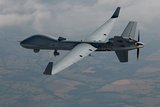Lockheed Martin demonstates ISR capabilities
Lockheed Martin will demonstrate its advanced intelligence, surveillance and reconnaissance (ISR), and battlefield communication technologies in a nine-day exercise at Empire Challenge 11 (EC 11), May 23 to June 3, at Fort Huachuca, Ariz.
The exercise will feature Lockheed Martin's Combat Edge, Vehicle Optics Sensor System (VOSS II), MONAX, Sniper Advanced Targeting Pod (ATP), Desert Hawk III Unmanned Aircraft System (UAS), TacWarrior and new product Stratus Rising tactical gateway. The systems will help determine the effects of integrated ISR and command and control elements in improving support to warfighters and enhancing information exchange between multi-national forces during joint operations.
The EC 11 exercise will simulate battlefield conditions in Afghanistan. The activities will help realize and leverage new capabilities for warfighters and command operations. Resulting data from the exercise will be shared with modeling and simulation laboratories across the US and at coalition sites in the United Kingdom, Canada and Australia.
"We are integrating our wide range of ISR capabilities into a common, shared set of capabilities known as the 'Combat Edge' system," said Scott Kreisler, Lockheed Martin's campaign manager for the exercise. "Our products will provide actionable command, control and intelligence at all levels of warfare from the tactical edge to national intelligence centers."
A new ISR capability, Stratus Rising tactical gateway generates intelligence products that are readily available to warfighters and intelligence analysts, with data discovery enabled via the Distributed Common Ground System Integration Backbone. In real time, Stratus Rising will process, prioritize, publish and disseminate live full-motion tactical imagery video from a VOSS II or Sniper ATP and will transmit information from wireless communications via the Distributed Common Ground System to TacWarrior.
"Stratus Rising tactical gateway will be among the new ISR capabilities that will enhance operations," said Steven Botwinik, director of business development for Research & Development at Lockheed Martin Missiles and Fire Control. "It complements our strong portfolio of technologies that will be demonstrated at Empire Challenge."
The rugged, lightweight Desert Hawk III UAS has been deployed in the global war on terror by United Kingdom. For EC 11, Desert Hawk III will be outfitted with a Gimbaled Electro-optic/Infrared camera and Electronic Support Measures focused on geolocation of radio emitters.
MONAX 3G wireless communications system enables secure voice, text and video from warfighters' smart phones or tablet devices. The EC 11 exercise will stream video intelligence to warfighters at the combat edge through these portable devices to test their effectiveness and, in turn, stream data and video they gather from their vantage point to command operations for a greater, more enhanced situational awareness picture and greater informed decision-making.
During the exercise, the Sniper pod's ISR capabilities for autonomous reconnaissance and data collection will be demonstrated, providing a complete battlefield picture for intelligence operations. Directed by pre-defined or pilot-designated flight points, this capability can be used to monitor convoy routes or wide areas of interest, in addition to capturing images of infrastructure such as oil pipelines, power lines and roadways.
Empire Challenge is an annual joint and multinational live ISR interoperability demonstration sponsored by the Office of the Under Secretary of Defense, Intelligence. Empire Challenge showcases emerging ISR capabilities and provides vital lessons learned to improve joint and combined ISR interoperability to support warfighters at the tactical edge. This year EC will focus on near-term capabilities that can be delivered rapidly to the warfighter.
Source: Lockheed Martin
More from Digital Battlespace
-
![Babcock nears first customer for Nomad AI translation tool]()
Babcock nears first customer for Nomad AI translation tool
Nomad can provide militaries with real-time intelligence, saving critical time on the battlefield.
-
![AUSA 2025: Israel’s Asio Technologies to supply hundreds of improved Taurus tactical systems]()
AUSA 2025: Israel’s Asio Technologies to supply hundreds of improved Taurus tactical systems
Taurus operates alongside the Israel Defense Forces’ Orion system which supports mission management across tens of thousands of manoeuvring forces, from squad leaders to battalion commanders.
-
![AUSA 2025: Kopin pushes micro-LED plans as China moves faster]()
AUSA 2025: Kopin pushes micro-LED plans as China moves faster
The plan for the new displays follows fresh investment in Kopin’s European facilities by Theon and an order for head-up displays in fielded aircraft, with funding from the US Department of Defense.
-
![AUSA 2025: Persistent Systems to complete its largest order by year’s end]()
AUSA 2025: Persistent Systems to complete its largest order by year’s end
Persistent Systems received its largest ever single order for its MPU5 devices and other systems earlier this month and has already delivered the 50 units to the US Army’s 4th Infantry Division.
-
![Aselsan brings in dozens of companies and systems under the Steel Dome umbrella]()
Aselsan brings in dozens of companies and systems under the Steel Dome umbrella
Turkey has joined the family of countries attempting to establish a multilayered air defence system with government approval in August 2024 for the effort landed by Aselsan. Dubbed Steel Dome, the programme joins Israel’s Iron Dome, the US Golden Dome, India’s Mission Sudarshan Chakra and South Korea’s low-altitude missile defence system.
-
![DSEI 2025: MARSS unveils new agnostic multidomain C4 system]()
DSEI 2025: MARSS unveils new agnostic multidomain C4 system
MARSS’ NiDAR system has been deployed using sensors from static platforms to provide detection and protection for static sights, such as critical infrastructure, ports and military bases.




























